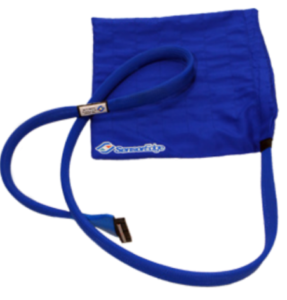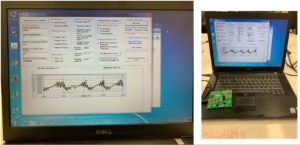Update #7 – Week of February 17
This week we made good progress in all three characteristics we desire for our device, but especially so in our preliminary testing for an optimal method of compression application. We met with Dr. Curci and Nathan, a representative from Hanger prosthetics, who supplied us with more insight on the directions we are taking.
Compression:


We utilized a SensorEdge force sensor as a method to create a 2D pressure map, and determine if our methods of compression were uniform. We placed the sensor over our mock limb, and overplayed our pressure system on top. We tested 4 different methods shown in the photos below: 1) custom air bladders, 2) pressure cuff, 3) CAD design with memory foam, and 4) memory foam on canvas fabric.




From these initial tests, we believe that the two air bladder methods apply the most uniform compression, but we also believe memory foam on canvas could be a very viable option. We only had foam from the maker space, but we will be getting foam of various densities from Hanger Prosthetics and will test them upon arrival. The CAD design, due to its rigid structure, did not allow for uniform compression since it was not the exact same curvature as the leg, but we are going to test making it with a more flexible resin material.
Wound Perfusion:
We did not make any significant progress in this area this week, but plan to reprint the CAD holder for the IC since the dimensions are slightly too small for the chip to fit in the desired location.
Limb Volume:

We finally attained a Windows 7 computer and were able to begin work on the bioimpedance board. We have only done some initial calibration, but hope to test its reliability with agar phantoms in the coming weeks and define an electrode setup that we will use going forward.
Software:
After some consultation from Dr. Curci, the main goal of the sensors should be to confirm that there is oxygen perfusing to the site of the wound. Therefore, in our weighted equation, this sensor would be the most critical and tracked for values. We have held off on many additions to this aspect until we determine which method of pressure modulation is ideal.